TOP 5 mistakes when buying GPS Tracker for cars
In Germany, over 20,000 cars are stolen every year, according to the Federal Criminal Police Office in 2019, so it makes sense to have a look at the parking lot to see if the car is still there in the morning. Some vehicle owners therefore acquire so-called GPS trackers, which are supposed to transmit the position of the vehicle if it is stolen. This is also a very good idea in principle, but many car owners make mistakes that can be expensive. Not every device that you can buy is good for something. What you can do wrong when buying a GPS tracker and what you should be aware of, is listed here, as well as other tips to protect against car theft.
Frequent sources of error with the Car GPS Tracker purchase
- devices with insufficient battery life
- devices with too little localisation accuracy
- Car GPS tracker is found too quickly by the thief.
- device needs sim card with high follow-up costs or does not work abroad
- Commissioning is too difficult – with SMS commands and APN settings
The following video also quickly makes it clear that a GPS tracker for the car is quite useful, but it is better to avoid the most common beginner’s mistakes when buying and installing:
table of contents
- 5 mistakes when buying a GPS Tracker for cars
- theft protection car test winner
- theft protection car steering wheel test
- Steering wheel claw with combination lock
- Steering wheel claw with Navi safety device
- anti-theft protection car ignition interrupter
- disconnect battery
- car theft protection app
- retrofit
- summary
Car theft protection GPS Tracker
The installation of a GPS tracker in a car can – with the right choice of device – be a useful protection against car theft. With over 20,000 car thefts per year in Germany, this is an appropriate, if not necessary, measure to protect against the theft of one’s own vehicle.
Why is the installation of a modern car GPS tracker useful?
Modern GPS trackers for the car not only allow the vehicle to be located with an accuracy of 50 cm, but also have various alarm and additional functions:
- alarm on movement
- alarm on noise
- Geofencing function (for removal of defined residence zone)
- Babyphone function: Listening to the surrounding sounds
- SMS alarm function for theft
A well selected and installed car GPS tracker system can therefore not only reliably display the current location of the vehicle but also immediately alerts the owner of the vehicle as soon as the vehicle is stolen. With advanced systems, even the selected escape route can be tracked on a smartphone right down to the current location. It is then easy for the police to arrest the thieves and return the car to its owner.
Well meant – but badly solved: GPS Tracker wrongly bought or installed
Buying such a GPS tracker, possibly the first cheap device from Asian production, is often a mistake:
Mistake no.1 with the car GPS tracker purchase
The most common mistake when buying a GPS tracker is not paying attention to the battery life of the GPS tracker. Cheap devices often have only a very short battery life of a few hours or days. High-performance devices can go several months on one battery charge. In reality, the purchase of the wrong device with the too short battery life often leads to the device working at first (however reliable), but then after a few days it neither transmits the GPS location nor alarms in case of theft. An alarm system that does not work in case of doubt is like no alarm system. You can save it right away. In reality, nobody wants to charge the battery of a tracker every few days. This interval should be as long as possible, ideally only every few months, then it will be done.
When buying a GPS tracker, make sure that the battery life of the tracker is several months.
Mistake no. 2 in the Auto GPS Tracker Purchase: Inaccuracy
Good GPS trackers for the car make it possible to locate the vehicle with an accuracy of up to 50 cm in case of doubt. Thus every car can be found exactly. Finding the vehicle or a descendant is therefore child’s play for the owner and the police. One finds exactly the driving route and the current location and can thus usually not only find the vehicle, but also catch the perpetrators. Less technically sophisticated devices either make only an inaccurate localisation possible, which is not even street-exact or have no signal at all, which would make localisation possible. It is possible that you saved a few Euros when buying such a device. But you also save on the result. In case of doubt, what is the use of saving 50 euros during the purchase in order not to find the 30.000 euros expensive car again afterwards or to get a much too big possible residence area displayed. This is the second most common mistake made when buying a car GPS tracker: devices with insufficient accuracy or too much downtime. The reason why this mistake is so unfortunate is that highly professional devices with great accuracy can be bought for manageable amounts and are not as expensive as one would expect. Especially since it is a one-time purchase, which protects the car for several years and can also protect the next vehicle.
Mistake no. 3 with the Auto GPS Tracker Purchase: quick findability
Many car owners believe that car thieves are stupid and simply get into a car, hot-wire it and drive off. But that is not so. For one thing, many car thefts now even eliminate the need to short-circuit the car, because the majority of stolen vehicles are stolen using range extenders for keyless go systems. . But even more importantly, thieves often look inside the vehicle at devices in the cigarette lighter, windshield or glove compartment. And that’s exactly where car owners often use simple GPS trackers to position themselves:
-
- windscreen (because of the better reception)
- cigarette lighter (so that there is always power because the battery is too weak)
GPS trackers should be invisible to car thieves at first glance, so the following locations are suitable for car GPS trackers:
-
- Installation for the rear vehicle lights – behind the boot cover
In general, GPS trackers have a worse reception inside the vehicle than outside the vehicle. That’s why many owners mount a GPS tracker directly on the windshield, which the car thief notices immediately and therefore borders on senselessness.
Evaluations of surveillance videos of vehicle thefts have shown that although thieves search the interior of the vehicle, sometimes even opening the hood before driving away with the stolen vehicle, not a single thief has laid down under the vehicle and searched the underside for possible GPS trackers. However, a modern GPS tracker can be hidden and permanently attached to the underside of the vehicle. The installation should be as easy as possible with the device so that even laymen can do it. Modern super magnets are directly included with professional devices.
Make sure that the car GPS tracker cannot be found too quickly – mounting it on the underside of the vehicle is considered optimal.
Mistake no. 4 with the Auto GPS Tracker Purchase: high follow-up costs
For Auto GPS Tracker to work, you need a SIM card. This is where the fourth most mistakes are made:
- SIM card generates high monthly follow-up costs for data traffic
- SIM card does not work abroad or generates immensely high costs there
Many car GPS tracking system sellers leave the buyer alone after the purchase or offer only SIM cards, which generate high follow-up costs for the monthly data traffic. This is unnecessary nowadays. Even worse are SIM cards that do not work at all in foreign countries or generate even higher costs there. Meanwhile, a considerable proportion of stolen vehicles are moved abroad. Probably the one who has a SIM card in the GPS tracker, which still reports the exact location of the vehicle and does not generate high follow-up costs. However, some laymen use a SIM card that does not allow data roaming abroad. If the offender crosses a border, the tracking stops. This is suboptimal. SIM cards that generate high monthly follow-up costs are just as suboptimal. Reasonably, you should buy a car GPS tracker system, where you buy the tracker in a set with a SIM card that does not generate any follow-up costs. With a well-composed set, you have peace of mind for a year and no follow-up costs. In addition, the SIM cards work without any problems even abroad.
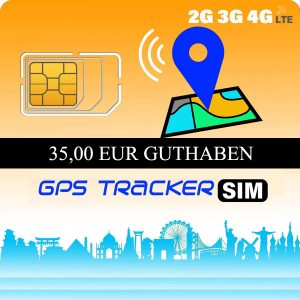
Mistake no. 5 with the Auto GPS Tracker Purchase: difficult start-up
Ideally, a GPS tracker for the car is quick and easy to install. However, with some providers you only get a device from Asian cheap production without a comprehensible manual. However, not every user has studied telecommunications and then finds it difficult to carry out the necessary programming.
In practice, this leads to the fact that some car owners, who actually want to protect their car with a car GPS tracker, quickly put an ordered system back in the corner and yet do not install it because it seems too difficult to put it into operation – or even send the device back.
Here you should buy the right one: A modern GPS tracker set with a suitable SIM card, where pre-settings have already been made and remaining programming is easy and well documented. Furthermore, modern car GPS trackers can be accessed via convenient programs and apps – like the GPS Tracker Pro©. This can be combined with a SIM card incl. data flatrate (1 year unlimited data).
If you avoid the five errors mentioned above when buying a car GPS tracker and putting it into operation, such a system is an effective anti-theft protection that will give you pleasure for a long time.
Anti-car-theft device test winner
Among the various anti-theft devices for a car, GPS tracker based systems have become popular since:
- Steering wheel claws are often cracked by thieves in 30-60 seconds
- Mere signaling alarm systems can be overridden by drilling the battery or disconnecting the power supply, and in some places car alarm systems that honk are no longer noticed because the false alarm rate is too high
- Standard alarm systems in keyless go systems can be outsmarted by pretending to have a key (range extension)
However, if the vehicle is equipped with a car GPS tracker module of the latest design, not only is the owner of the vehicle immediately informed (e.g. by SMS) in the event of attempted theft, but the owner can also determine and track the position of the vehicle and its route using a tracking software solution. This usually makes it easy for the police and owner to find the car and also the perpetrator.
However, there are many different systems on the market for car GPS trackers. Here you have to be careful what you buy in order not to be disappointed.
Test winner GPS Tracker
In a comparison of different car GPS trackers in the test, the GPS Tracker Pro© emerged as the test winner.
Here in the video you can see the TOP 3 Car GPS Trackers:
Decisive for the test victory among the car GPS trackers is the Pro Tracker:
-
- Battery charge lasts up to 3-4 months – without recharging
- Signal reflection technology is used to pick up signals from the ground with amplification
- light attachment to the underbody possible
- geofence function – alarm when leaving a predefined environment
- Integrated Super Magnet
- processing and weather resistance
Result of our test:
- 1st place: GPS Tracker Pro©
- 2nd place: GPS Tracker Mini©
- 3rdplace: GPS Tracker Micro
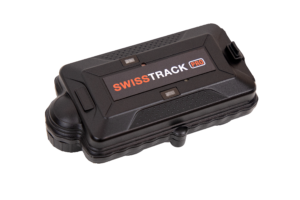
Theft protection car steering wheel test
Those who want to protect their car from theft sometimes resort to steering wheel locking systems, often called steering wheel claws. But what good are such steering wheel claws as theft protection. What did a test of such supposed theft protection systems show?
The magazine AUTO BILD tested various steering wheel claws in 2018. However, the result was rather disappointing: Some steering wheel claws did not withstand a break-in attempt for 60 seconds, others were cracked in less than 2 minutes. This is not what a car owner thinks of as “safe”. Nearly all steering wheel claws can be cut with a flex in a very short time, which makes the car steerable again. Steering wheel claws also do not prevent the vehicle from being transported away on a trailer or tow truck.
Some steering wheel claws can be opened with a screwdriver
Some steering wheel claws can be opened by thieves with a screwdriver and simple tools, while others require special tools, which professional car thieves do have. Steering wheel claws with combination lock can be easily cracked by professionals. With steering wheel claws with built-in navigation system the thief immediately sees the presence of a high-quality navigation system and removes the claw and the navigation system. Here a hidden GPS tracker might be the much better choice.
Steering wheel claws with alarm system
Even steering wheel claws with an alarm system are no additional protection. Thieves recognize this immediately and cover the alarm device with a cushion while the claw is cracked. In the test, this was achieved with many devices in a maximum of 2 minutes, often in less than a minute.
Hard installation – rarely used
The more difficult the steering wheel claw is to mount, the less often it is used, in case of doubt, because the effort is too high for the owner and he does not want to get his fingers dirty. A car anti-theft device only makes sense if it works permanently and not just sometimes.
Steering wheel claw does not protect against theft of other objects in the vehicle
A steering wheel claw alone does not protect against the theft of other objects in the vehicle either: In the meantime, airbag systems are also traded on the secondary market, so that some thieves break into a car and steal the passenger airbag and side airbags. On the other hand, the steering wheel claw on the steering wheel does not provide any protection either. And usually does not even give an alarm.
Steering wheel claw discourages amateurs at best
In real life, a steering wheel claw as theft protection at best discourages amateurs from stealing a car: drug addicts who are looking for the next 50 euros for a portion of drugs in search of quickly usable items or teenagers who have become overconfident after drinking alcohol.
However, the vast majority of high-value vehicles are stolen by professionals and not by amateurs. Professionals who do this professionally and every day. And these professionals know how to remove steering wheel claws quickly and effectively and are familiar with the different types.
Steering wheel claws with combination lock – safe?
Some steering wheel claws have a combination lock instead of a key lock – usually with 3-5 numbers to be set. The advantage of such steering wheel claws with combination locks is that you don’t need a key to remove the claw, but can do so by simply setting the correct combination of numbers.
Thieves can easily open combination locks
Many people may remember the one boy from school who could easily open the combination locks of bicycles. If you have a good ear and a good feeling in your fingers, you can still open many combination locks quickly and cog by cog – without having the combination first. Some owners also set their birthday as a combination, which is an additional security risk. Some thieves also install a hidden tiny camera near the vehicle, which films the set code when opened by the owner. Or a passenger remembers the numerical code and passes it on without permission. It’s all been there before. So a steering wheel claw with a combination lock does not promise absolute security.
The longer a steering wheel claw is on the market…
The longer a steering wheel claw is on the market, the more thieves know how to crack it in the shortest possible time. Most steering wheel claws on the market can be opened within 30 seconds for a locksmith – and thus also for a car thief. There are already tutorials on the Internet, which of course can also be read by car thieves or even watched as a video.
Thieves saw the steering wheel to pieces – circumvent the steering wheel claw
What many car owners don’t consider is the fact that some thieves don’t damage or saw through the steering wheel claw at all, but simply saw a few centimeters out of the steering wheel. This usually happens in 15-30 seconds, then the claw can often be removed via the “hole” in the steering wheel ring, as was determined in tests by former car thieves. The car thieves may then have damaged the steering wheel, but the spare part is either stolen from another car or simply reordered. With a stolen car in the five- or even six-figure value range, this is no longer of any consequence.
Steering wheel claw with navigation system fuse
A steering wheel claw with a navigation system is a claw, which is usually made of iron or steel and is attached to the steering wheel in such a way that on the one hand the complete steering process is blocked, and on the other hand a part of the claw (usually with a plate) is in front of the permanently installed navigation system or radio of the car, so that it is not or should not be stolen.
Moreover, such steering wheel claw systems with an additional metal plate for navigation protection are so heavy and globular that they are often not used regularly in practice because the handling is so awkward or heavy. Such claws often act like a signal transmitter “Here is something to get”. The actual intention “You can’t steal anything here” has long been outdated by the practice. Thieves pick the lock within a maximum of 2 minutes. If there is an integrated alarm system, they may have to cover the alarm transmitter with a cushion or foam. For experienced thieves the easiest exercise. Of course it is even easier if the thieves break into the apartment and steal the key for the car and the steering wheel claw. Then it often only means: “And away is the car”. Whether the thieves then steal the unlocked steering wheel claw or lay it next to the car – as a reminder – is then only secondary.
Theft protection by car ignition interrupter
Some manufacturers offer car alarm systems as standard or at extra charge, which also interrupt the ignition when an alarm is triggered. A layman can then no longer drive away with the car. This is useful if you want to prevent your own son from driving away with the car against his parents’ will.
However, it does not help much if professional car thieves are at work. Most professional thieves try to outwit the keyless-go-system of the car when it comes to high-quality cars. This is done by using scanners and range extenders. Electronic devices that do not cost a fortune and simulate the vehicle’s rightful owner approaching the vehicle. As a result, the car then opens, the alarm system is deactivated, as well as a possible ignition interruption and the engine can be started. The police estimate that more than 50% of all thefts of higher value vehicles are handled in this way.
But even in cases where there is no keyless-go system or it cannot be outsmarted, it is relatively easy for thieves to outsmart the alarm system or ignition interruption. All modern cars have a so-called OBD interface. This interface is actually designed so that a garage can plug in a diagnostic tool there and quickly find possible sources of error in the vehicle. Error codes in the vehicle electronics or engine diagnostics can be read out quickly here. In the meantime, however, there are plugs for this on-board diagnostic interface on the market that cost less than 20 euros and enable thieves to access this interface as well. Provided a small notebook is connected, they can use it to start the vehicle, bypass ignition interruptions and switch off alarm systems. The socket for this OBD system is usually located near the steering wheel column. This is extremely practical for thieves: once they are in the car, they can connect a small notebook to the OBD socket in seconds and call up all the functions they want. It is also not very hidden, so that you can get to it quickly in the workshop. Any car ignition interruption becomes a joke for thieves. Just press one or two buttons on the notebook and off you go. Especially clever car thieves have already written a so-called macro, a sequence of commands for the on-board electronics, which are processed one after the other:
- Alarm system off
- Bypass ignition interruption
- Start the engine
Disconnect battery – Theft protection?
Many a car owner thinks that his car alarm system or additional security features in the car, which have been installed by the manufacturer, reliably protect him against car theft. This is unfortunately not the case. Even car thieves are not stupid. Professional car thieves are not little boys who make beginner’s mistakes and wonder why a car honks when they break in. Professional car thieves have a very specific approach.
Since the vast majority of high value vehicles have a car alarm system built in that is powered by the vehicle’s main battery, thieves will disconnect this battery before breaking in, breaking in or towing the vehicle. This is done by opening the bonnet or cutting important cables. This is usually done without entering the passenger compartment by simply using a screwdriver to trick the closing mechanism of the engine compartment door.
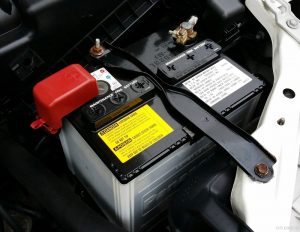
Drill into battery
If disconnecting the battery is not so easy, car thieves drill into the vehicle battery. If necessary, even through the metal sheet, which lies above or next to it. Professionals know exactly where the battery is located in the vehicle to be stolen and drill a small but sufficient hole in the battery. This causes the battery acid to run out of the battery and the battery no longer gives off any current. A system that is as simple as it is reliable. The vehicle can then be moved (e.g. on a trailer) without the need for an alarm system or other systems that have been installed at the factory. The only thing that helps here is an external alarm system with an external power source, which then still works, e.g. the GPS Tracker Pro©.
Car theft protection App
With the car theft protection app you have to distinguish between two different systems:
- Systems that are simply plugged into the OBD socket
- Systems in which a mobile phone must be left in the car
- Professional car GPS trackers, which are carried hidden
Tracking your car and always knowing where it is makes a lot of sense.
However, not all systems on the market are equally suitable for preventing or investigating theft. Here we will take a look at the different systems:
A: Plug-in systems for the OBD socket as an alarm system via App
Here, a small plug is to be plugged into the vehicle’s on-board diagnostic socket, which then sends signals to a smartphone if necessary when the vehicle is moving. It is then also possible to locate the vehicle. The good approach: The OBD socket provides a permanent power supply for the tool. Unfortunately, the tool is not quite as suitable in practice, which has two different reasons:
The installation inside the vehicle shields a large part of the radiation, so that partly no localization or only an inaccurate localization can take place.
The main reason for the lack of practicality is that many professional car thieves immediately look for the OBD interface when they enter the car and then carefully remove the device and drive away with the car. The alarm may still go off when the device is removed, but by the time someone looks to the right, the vehicle is already long gone and cannot be located.
B: Systems where you should leave a smartphone in the car – app controlled
There are also systems that work via an app that requires you to leave a smartphone in the car and as soon as the car moves or the smartphone is activated an alarm is triggered – e.g. on the owner’s Smartwatch or the mobile phone gives a signal.
This is a sensible approach, but it only works if the owner is close to the car and can be there quickly.
horse foot: At some point the smartphone battery is empty: With many mobile phones after one day at the latest.
But the biggest knockout criterion is: If the thief discovers the smartphone, he removes the SIM card and has stolen a mobile phone in addition to the stolen car. Alternatively, the thief simply throws the mobile phone out the window. Such systems are therefore only conditionally suitable for securing a car. The lack of battery life of often only 1 day does not even survive a weekend when the car is parked in front of the house. In practice: clearly too little. No matter how well the app is programmed.
C: Professional car GPS tracker with control app
Professional car GPS trackers can also be operated via corresponding computer programs or apps and offer numerous additional functions. If the Auto GPS Tracker is hidden in or even better attached to the car and is not immediately detected by the thief, probably the most promising solution. The corresponding apps enable the car owner to
- Alarm when the vehicle is moved
- Geofence alarm as soon as the vehicle exceeds a specified radius
- Exact localization of the vehicle
- route recording of the vehicle: where does the vehicle come from
- movement alarm
- Noise alarm: At a certain noise level an alarm is triggered
- babyphone function (listening in on the environment)
Such apps in combination with a powerful GPS tracker for the car are, by today’s standards, ideal for monitoring the car. A modern alarm system that can do much more than conventional alarm systems.
The big plus of such external car GPS trackers with app operation:
- External power supply: Even if the main battery is disconnected, the device still works
- Long battery life: Not like a smartphone after 1-2 days of use, but battery life up to 3-4 months
- Hidden mounting on the vehicle underbody possible (protected from water and view)
- Modern devices enable positioning to the nearest meter (e.g. GPS Tracker Pro©)
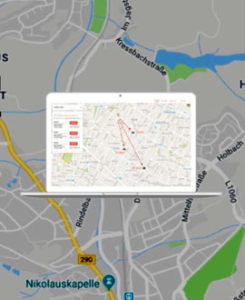
Retrofitting a car GPS tracker as theft protection
Most cars today do not have a built-in GPS tracker. Even if it were built in, it is often easy for a thief to deactivate it by disconnecting the battery or the OBD interface.
Therefore the question arises whether it is possible to retrofit a car GPS tracker.
Yes, one can. But you have to distinguish between several systems: There are GPS trackers that can be plugged into the car’s cigarette lighter or power supply and others that are a closed system and can be easily attached anywhere on the car. The latter are of course the most advanced. >/strong>
Refitting with GPS tracker for cigarette lighter
Some GPS trackers can be powered simply by plugging into the car cigarette lighter socket. This works for example with the standard GPS Tracker Mini©. The advantage is that the device is permanently supplied with power when the cable is plugged into the cigarette lighter. The disadvantage is that a possible thief will usually see this immediately and remove it. The second disadvantage is that the signal transmission inside the vehicle is more limited than when the device is mounted outside the vehicle.
The device is then well suited if you only want to find out where an authorized user is at the moment and the user does not have the idea to remove the device. Or if the device can be attached to a cigarette lighter in the rear that the thief does not notice immediately.
Refitting with GPS tracker – incl. connection to the vehicle power supply system
If you are a little technophile, you can connect a GPS Autotracker to the vehicle power supply system, e.g. in the engine compartment or in the trunk (e.g. near the rear lights behind a cover). Here a thief will usually not look at first glance and may not notice this quickly enough. If you don’t have two left hands, you’ll get it right. Advantage: The device is permanently supplied with power (if it is connected correctly) and is not immediately detected by the thief. The devices are very small and can actually be easily hidden in the vehicle. The devices are often not much bigger than a matchbox, e.g. the GPS Tracker Mini©.
Disadvantage: Since it is installed inside the vehicle, the reception of radiation is only possible to a limited extent, which can sometimes lead to location problems
Disadvantage 2: You have to have some crafting skills, because it is not a plug & amp; play solution.
![]()
Conclusion: Retrofitting with autarkic car GPS trackers
If you have a powerful stand-alone car GPS tracking system, you can retrofit your vehicle very quickly. the GPS Tracker Pro©. A small black box that you simply attach to the bottom of your car. Retrofitting could not be easier.
You don’t have to be a car mechanic or mechatronics engineer or have studied electrical engineering. You just have to know where the bottom of the car is and position the device there with one hand. That’s it.
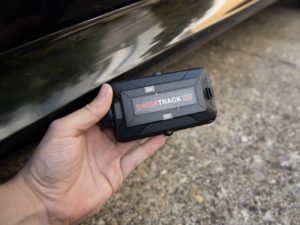
Conclusion in terms of theft protection for cars
You will probably never be able to completely prevent cars from being stolen or people from trying to do so, but with working car GPS trackers you can make life much harder for thieves. This is especially true if you install the GPS tracker in a way that thieves won’t notice it so quickly. This can be behind the dashboard or radio as well as by magnetic docking on the underside of the vehicle. Anywhere where the thief does not look first.
Modern GPS trackers are accompanied by an app or program that offers a premium alarm center: You are immediately informed if the car is moving or even shaking and you always get the current location of the car. Helpful for the police, the insurance company and yourself. If everyone had such a car GPS tracker on their vehicle, there would be much less theft and the detection rate would be much higher. Entire police units that are involved in the investigation of such thefts, or at least try to do so, would be unemployed. Currently, not even every fifth car theft in Germany is solved. If you have a GPS tracker in your car, you drastically increase the probability that the stolen car will not get far.
Standard-fit alarm systems or ignition interruptions often shut thieves down in seconds by disconnecting the battery or via the OBD interface, which offers limited or no protection at all.
The solution for many car owners when it comes to theft protection for their cars are and will remain car GPS trackers, such as the test winner GPS Tracker Pro©.
![]()
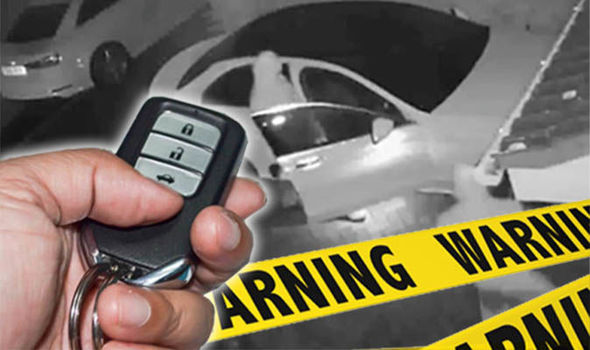
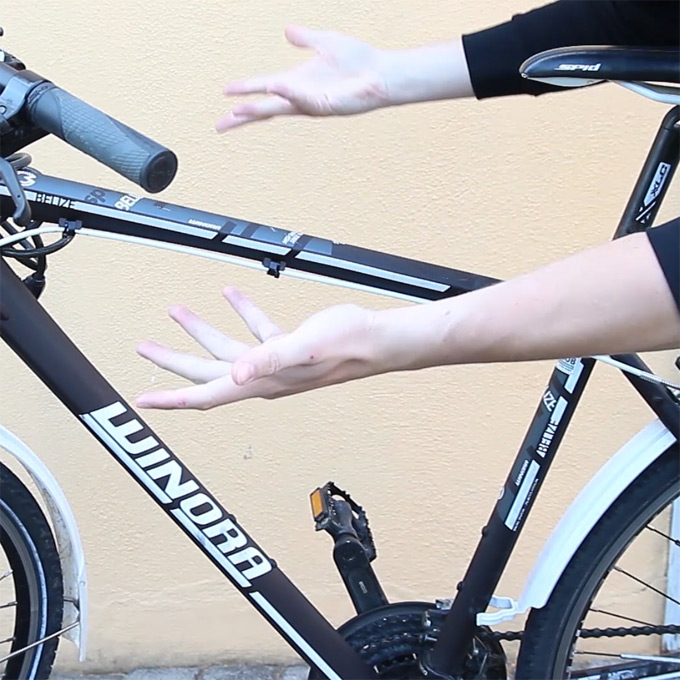
Just wanna comment on few general things, The website design and style is perfect, the content is very fantastic. Brigitta Maurise Rockwood